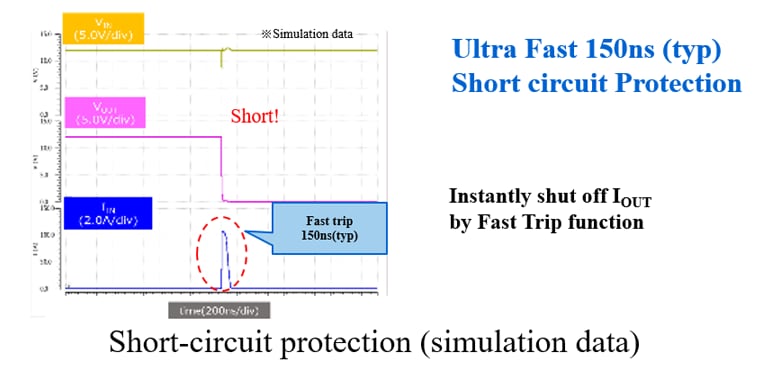- 半導體首頁
-
應用Automotive
Body Electronics
xEV
In-Vehicle Infotainment
Advanced Driver-Assistance Systems (ADAS)
Chassis
IndustrialInfrastructure
BEMS/HEMS
Factory Automation
Commercial Equipment
Consumer/PersonalIoT Equipment
Healthcare
Wearable Device
Mobile
Computer Peripherals
-
產品車用元件
Discrete Semiconductor
Diodes
電晶體
通用邏輯IC
Analog Devices
Digital Devices
Wireless Devices
※
: Products list (parametric search)
功率半導體※
: Products list (parametric search)
隔離器/固態繼電器Photocouplers
Digital Isolators
※
: Products list (parametric search)
MOSFETsIGBTs/IEGTs雙極性電晶體※
: Products list (parametric search)
Diodes※
: Products list (parametric search)
微控制器馬達驅動 ICs智能功率 ICs※
: Products list (parametric search)
電源管理 ICs線性 ICs※
: Products list (parametric search)
通用邏輯 ICs線性影像感測器其他產品其他產品
※
: Products list (parametric search)
-
開發/設計支援
開發 / 設計支援
-
技術知識
- 購買管道
- 型號 & 關鍵字搜尋
- 交叉搜尋
- 參數搜尋
- 線上庫存查詢跟購買
This webpage doesn't work with Internet Explorer. Please use the latest version of Google Chrome, Microsoft Edge, Mozilla Firefox or Safari.
型號需要超過三個文字以上 Search for multiple part numbers fromhere.
The information presented in this cross reference is based on TOSHIBA's selection criteria and should be treated as a suggestion only. Please carefully review the latest versions of all relevant information on the TOSHIBA products, including without limitation data sheets and validate all operating parameters of the TOSHIBA products to ensure that the suggested TOSHIBA products are truly compatible with your design and application.Please note that this cross reference is based on TOSHIBA's estimate of compatibility with other manufacturers' products, based on other manufacturers' published data, at the time the data was collected.TOSHIBA is not responsible for any incorrect or incomplete information. Information is subject to change at any time without notice.
型號需要超過三個文字以上
How does short-circuit protection of eFuse IC (electronic fuses) work?
Short-circuit protection is a protective function, also known as fast trip.
The following is an explanation based on the operation example of the TCKE8 series.
Please check each the data sheets for details.
When a large current (exceeding the set current) flows instantaneously through the MOSFET, the eFuse IC determines that the output is short-circuited, and shuts down the MOSFET in a very short time. After shutdown, the MOSFET is automatically turned on by a timer set inside the eFuse IC. At this time, if there is no abnormality in the subsequent ICs or circuits, eFuse IC operates normally. However, if there is a reason for overcurrent to flow, eFuse IC performs overcurrent protective operation.
In the overcurrent protectionthe of auto-retry type, the output current is limited by the overcurrent protection, the output is shut down when the junction temperature rises to the temperature of thermal shutdown, and when the junction temperature drops, the output turns on again to limit the output current.
After that, the recovery cycle is repeated by the following cycles until the overcurrent is eliminated:
“Operation stop → Temperature drop → Overheat protection release → Current clamp → Temperature rise → Overheat protection → Operation stop.”
The overcurrent protection of the latch type shuts down the output when an overcurrent is detected and retains the output off state. Releasing the output-off is performed by once dropping EN/ UVLO signal to the "L" level and then inputting the "H" level signal again.

- The following documents also describe eFuse IC, so please refer to them.
Basic Usage and Functions of eFuse IC
TCKE712BNL eFuse IC with Flag Output and Reverse-Current Protection
eFuse IC Glossary - Parametric searches for all eFuse IC products are available here:
Parametric search - Purchasing eFuse IC here
Stock Check & Purchase

